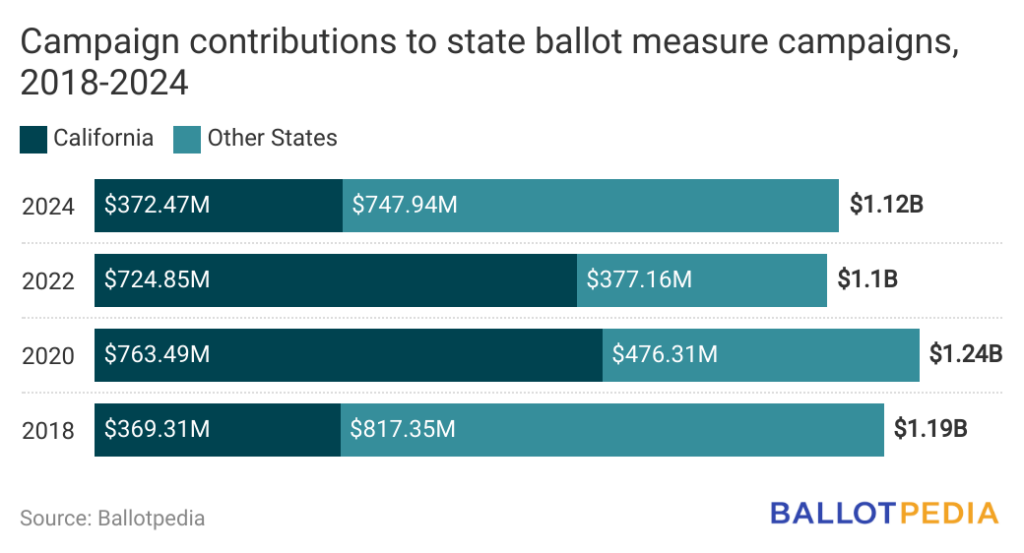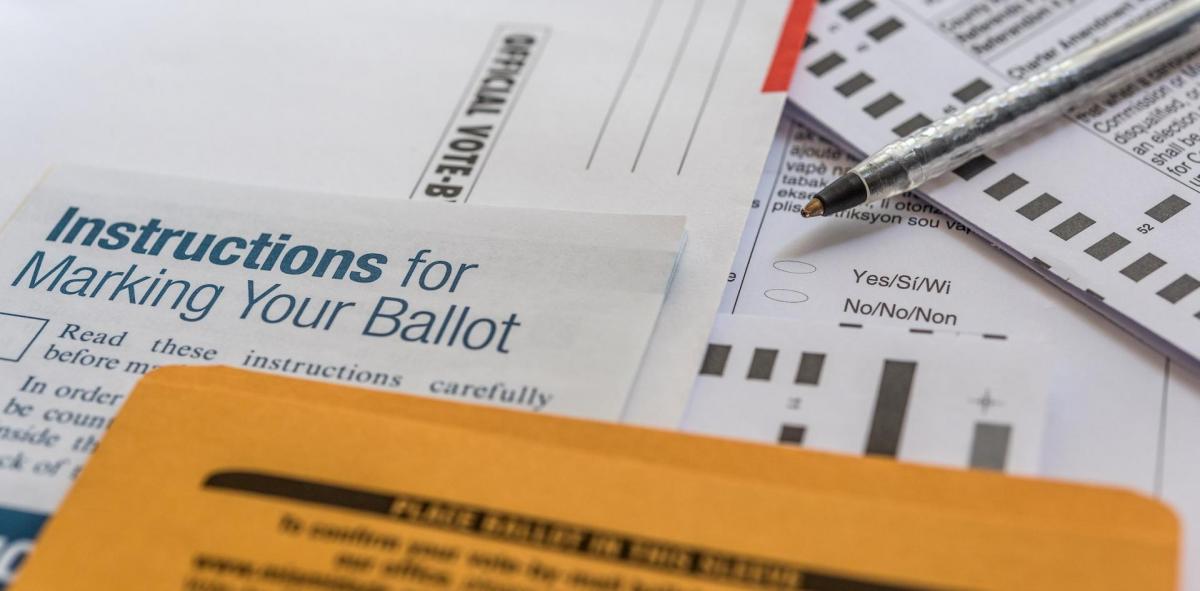For 2024, 159 statewide ballot measures were certified for the ballot, including 146 for Nov. 5. As of October 30, Ballotpedia identified $1.12 billion in contributions to support or oppose this year’s statewide measures. In 2022, for comparison, $1.10 billion was raised through December 31, 2022, to support or oppose 140 state ballot measures.
This report provides an overview of campaign finance for prominent topics and trends, highlights the most expensive ballot measures, and compares fundraising across states. You can review ballot measure campaign finance for 2024 here.
Topic Rankings
This year's ballot measure trends address issues like abortion, ranked-choice voting, and drug-use policies. And among these are the most expensive abortion-related and marijuana-related ballot measures on record—both in Florida.
There are 11 abortion-related measures on the ballot for Nov. 5. While 11 of 159 (6.9%) of ballot measures address abortion, the issue has attracted 22.5% of ballot measure contributions in 2024 at $252.5 million. Florida Amendment 4 is the most expensive of the abortion-related ballot measures at $120.9 million. Supporters received $110.0 million, and opponents received $11.0 million. Amendment 4 surpassed last year's Ohio Issue 1, which provided for a state constitutional right to abortion, and saw $89.9 million between supporters and opponents. The second most expensive this year is Arizona Proposition 139 at $36.4 million between both sides.
While just five measures (3.1%) relate to drug use policies, either marijuana or psychedelic substances, these proposals account for 14.0% of this year's ballot measure contributions. Florida Amendment 3, which would legalize marijuana, has seen $145.6 million, including $121.7 million from supporters and $23.9 million from opponents. Before Florida Amendment 3, the most expensive marijuana legalization measure election was California Proposition 64 in 2016, which saw $27.1 million. Ballotpedia has published campaign finance data for all marijuana legalization initiatives dating back to 2010 here. The second most expensive drug use measure this year is Massachusetts Question 4, which would legalize psychedelic substances and services, with $7.5 million.
Ten (6.3%) address electoral systems, like ranked-choice voting and top-two or top-four primaries. Together, these measures account for 7.8% of ballot measure contributions. The most expensive is Nevada Question 3, which would implement top-five primaries and ranked-choice voting general elections, at $21.9 million. Supporters raised $19.9 million, and opponents raised $2.1 million. The second most expensive is Arizona Proposition 140, which would replace partisan primaries with a new system, like top-two or top-four primaries, and could require ranked-choice voting for general elections, depending on how the measure is implemented. Supporters of Arizona Proposition 140 received $15.9 million, and opponents received $150,000.
Measure Rankings
As of October 30, the most expensive ballot measure election is California Proposition 33, which would permit local governments to implement rent control policies. The ballot measure has seen $171.1 million, with opponents raising $121.2 million and supporters raising $49.9 million.
Florida Amendment 3 and Amendment 4 are the next most expensive. Amendment 3, which would legalize marijuana, has seen $145.6 million. Amendment 4, which would provide a state constitutional right to abortion, has seen $120.9 million.
Below are the ten most expensive ballot measure elections for 2024:

State Rankings
California accounts for 33.2% of the cumulative contributions across the states. In California, $372.5 million has been raised for 11 ballot propositions. The next four states with the most contributions are:
- Florida, where six measures are on the ballot, at $261.3 million or 23.3% of the cumulative total.
- Missouri, where eight measures are on the ballot, at $97.6 million or 8.7% of the cumulative total.
- Arizona, where 13 measures are on the ballot, at $52.7 million or 4.7% of the cumulative total.
- Ohio, where one measure is on the ballot, at $45.3 million or 4.0% of the cumulative total.
In 2022, the top three states were California (65.8%), Michigan (9.3%), and Massachusetts (6.5%). In 2020, the top three states were California (61.6%), Illinois (10.0%), and Massachusetts (5.0%).
The chart below compares total contributions for general election cycles from 2018 through 2024, along with the amount associated with campaigns in California:

Campaign Finance Rules
The rules surrounding ballot measure campaign finance are different from candidate elections. “Referenda are held on issues, not candidates for public office,” wrote the U.S. Supreme Court in 1978 (First National Bank of Boston v. Bellotti). The court has held that spending on ballot measure campaigns is similar to issue advocacy in the lawmaking process. Following the U.S. Supreme Court, the IRS considers the financing of ballot measure campaigns as a type of lobbying.
Regarding limits on contributions to candidate committees, the court’s 1975 ruling in Buckley v. Valeo said such restrictions were constitutional because they prevented real and apparent corruption. Because ballot measures are issues rather than candidates, the courts have ruled that the same anti-corruption rationale for campaign finance limits does not apply to ballot measure campaigns. The court’s 1981 ruling in Citizens Against Rent Control v. City of Berkeley held that limiting contributions to ballot measure committees violated the First Amendment.


